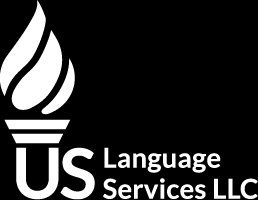How to Work in the U.S. As a Foreign-Educated Landscape Architect

Working as a landscape architect is a rewarding job that allows you to design and manage both man-made and natural environments. If you’ve received an education in landscape architecture outside of the United States, you may be wondering how to bring your experience to the U.S. and continue your profession. After all, working as a landscape architect in the U.S. has its benefits; according to the U.S. Bureau of Labor Statistics, landscape architects earn between $43,260 and $115,380, with the average median wage being $67,950.
Our guide will help you understand the process of working in the U.S. as a foreign-educated landscape architect and will answer important questions such as:
- What Is the Process for Working in the U.S. As a Foreign-Educated Landscape Architect?
- How Much Does It Cost to Work as a Foreign-Educated Landscape Architect in the U.S.?
- How Long Does It Take To Work as a Foreign-Educated Landscape Architect in the U.S.?
- Are There Any Restrictions to Working as a Foreign-Educated Landscape Architect in the U.S.?
- What Are the State-Specific Requirements for Foreign-Educated Landscape Architects?
- What Are the Immigration Requirements for Foreign-Educated Landscape Architects?
- Where Can I Get a Certified Translation?
What Is the Process for Working in the U.S. As a Foreign-Educated Landscape Architect?
The process for working in the U.S. as a foreign-educated landscape architect involves several important steps to ensure you have the right education and licenses to practice your profession in your chosen state. Because states vary in their licensing requirements, make sure to select the state you wish to work in during your initial review of this process so you can research more detailed information later on.
The steps to working in the U.S. as a foreign-educated landscape architect include the following:
- Make sure your foreign credentials meet basic landscape architect education requirements for your chosen state. Most states require a bachelor’s degree in this field as a minimum, but more advanced degrees and work experience might be required. Obtain a credential evaluation of your foreign qualifications utilizing a reputable service from either the National Association of Credential Evaluation Services (NACES) or the Association of International Credential Evaluators (AICE). Keep in mind you will most likely need an accurate certified translation as the first step in receiving a credential evaluation.
- Once you have your credential evaluation, you will need to submit it to your chosen state’s licensing board. The board will help you determine if you need to meet further education requirements and whether or not you are eligible to take the Landscape Architect Registration Examination (LARE); every step requires potential landscape architecture licensing candidates to take and pass this exam.
- If you are eligible to take the LARE, prepare for this exam and work to pass each section of it. States have differing rules on the time frame in which you will need to pass every section of the test after you have completed the first of the four sections. Consult with state information for more details on this, and further navigate state licensing requirements using the Council of Landscape Architectural Registration Boards (CLARB) interactive map.
- While you are preparing for and taking the LARE, it might be helpful for you to also take and pass either the Test of English as a Foreign Language (TOEFL) or the International English Language Testing System (IELTS). These tests are helpful if you received your education in a country that does not have English as a primary language and may help state licensing boards recognize your commitment to practicing as a landscape architect in the U.S.
- After you have completed the LARE, you will need to look into state-specific license requirements. These vary based on the state you wish to work in and they may come with specific license fees, application requirements, and education or experience steps that you need to complete before a license is awarded. Check with your chosen state’s landscape architect licensing board for more detailed information.
- The final step in this process after meeting education requirements and obtaining licensing is immigrating to the U.S. so you can legally live in your chosen state and practice as a landscape architect. You may need to obtain a visa or a green card for this, so make sure to review the information on the U.S. Citizenship and Immigration Services website and consult with an immigration lawyer for more details.
How Much Does It Cost to Work as a Foreign-Educated Landscape Architect in the U.S.?
The cost of working as a foreign-educated landscape architect in the U.S. takes into account the cost of examinations, state licensing fees, and the potential cost of immigration. Overall, the cost of this process will likely be several thousand dollars, as the LARE costs between $192 and $407 per section to register for, not including preparation materials. If you need to take the TOEFL or IELTS, this will be an additional several hundred dollars.
State landscape architect licensing fees are several hundred dollars at least, including application and actual license fees, and you may be required to pay for continuing education and license renewal fees to keep up with state-specific regulations.
Immigration is also a hefty cost, and visa or green card paperwork can range between several hundred dollars and a few thousand dollars to complete; you may also need to consult an immigration lawyer, which is an additional cost.
How Long Does It Take To Work as a Foreign-Educated Landscape Architect in the U.S.?
The process of working as a foreign-educated landscape architect in the U.S. isn’t the shortest, but if you have your education requirements already completed, it doesn’t have to take more than a few years.
Studying and taking the LARE takes an average of 6 months to a year, and you may be able to study for and pass other exams like the TOEFL and IELTS during this time. Completing state licensing requirements takes a few months on average, but this could be longer if you need to meet additional education and experience requirements for your state.
Immigration is likely to be the longest part of this process as obtaining a visa or green card to practice your profession in the U.S. can take anywhere between 13 and 24 months, depending on your specific situation.
Are There Any Restrictions to Working as a Foreign-Educated Landscape Architect in the U.S.?
Once you have made sure that your foreign qualifications meet education expectations, you review state-specific education and examination requirements, you pass the LARE, and you receive your state license, you are free to practice as a foreign-educated landscape architect without issue.
Make sure that you keep up with any ongoing state requirements for renewing your license or obtaining continuing education, and that you also pay attention to any visa or immigration requirements that you might need to meet.
What Are the State-Specific Requirements for Foreign-Educated Landscape Architects?
State requirements for foreign-educated landscape architects vary, but you can expect most states to have additional examination and application requirements, along with fees to obtain your license. As you apply for a license in your chosen state, you may be asked to submit evidence that your foreign qualifications meet expected education requirements, your LARE test scores, proof of eligibility to work in the U.S., and any scores from state-specific exams.
After you have successfully obtained licensure in your chosen state, you may need to keep up with state-specific requirements regarding continuing education and license renewal steps.
Use this directory of state landscape architect licensing boards provided by the American Society of Landscape Architects to review the state-specific license requirements for your chosen state.
What Are the Immigration Requirements for Foreign-Educated Landscape Architects?
Foreign-educated landscape architects may be able to immigrate to the United States and work in a few different ways. If you are immigrating from Canada or Mexico, one of the countries in the NAFTA agreement, you may be able to obtain a TN NAFTA Professionals visa. Individuals from other countries might be eligible to obtain employment-based EB-2 or EB-3 visas depending on their specific situation.
It’s important to meet with an immigration lawyer fairly early on in this process so you can understand which immigration options are available to you and get started with paperwork as you complete the steps to becoming a landscape architect in the U.S.
Where Can I Get a Certified Translation?
Certified translations are essential during many steps of the process of becoming a foreign-educated architect in the U.S. You will need a certified translation of your original documents when you seek out a credential evaluation of your foreign qualifications in addition to submitting information to state licensing boards.
At our online store, you can obtain a certified translation of important documents that are needed throughout this process. We translate documents such as:
- Diplomas
- Academic transcripts
- Business licenses and certifications
- Resumes and employment records
- Birth certificates
Guaranteed Acceptance
All our certified to English translations are accepted by the USCIS. Our translations follow the guidelines established by the USCIS and are also accepted by educational institutions.
Most Requested Documents
FAQs
You can order most translations 24 hours a day, 7 days a week through our online store. For large projects (more than 20,000 words or 50 pages), please request a quote.


